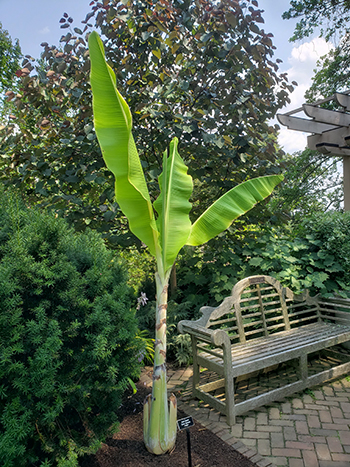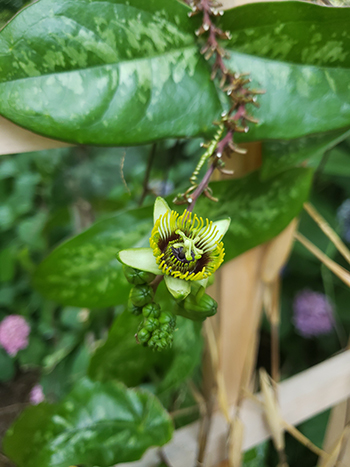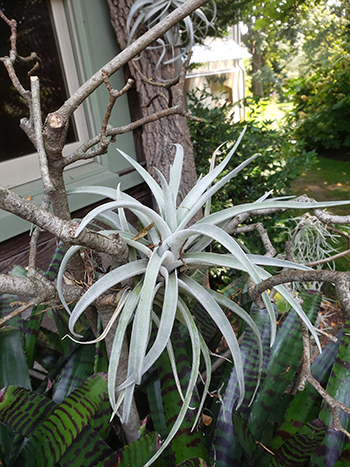
Plants of the Week: August 16
Guest Author: Hailey Dunbar

Ensete glaucum, the snow banana, is one of the seven current species in its genus, with all other true bananas maintaining the classification of Musa. This exquisite banana typically showcases its subtle grandeur with a fine display of light green leaves and a dusty white pseudostem. Some are known to produce a bluish hue as opposed to white. Regardless of its coloration, this tropical specimen is sure to create an eye-catching show when paired with darker foliage, and just as well with brighter plantings. Scott Arboretum’s lovely specimen can be found in the Terry Shane Teaching Garden. Photo credit: H. Dunbar

Passiflora coriacea, the bat-leaved passionflower, presents an adorable, dainty floral display and boasts a unique and riveting leaf shape as a complement. This tropical vine becomes fast-growing once established, and due to its vigorous nature, must be pruned to prevent it taking over. A magnificent purple fruit may be produced by the plant, and though many species of Passiflora fruit are edible, this species is typically grown purely as an ornamental interest. This eccentric vining beauty can be found adjacent to the Ensete glaucum on the trellis in the Terry Shane Teaching Garden. Photo credit: H. Dunbar

Tillandsia, or air plants as many know them, is a large classification referring to over 650 species in the genus. While species differentiations can often be made in specialty nurseries, it can be hard to correctly identify the exact origin of each air plant that is acquired, as they are cross bred with such high frequency it is difficult to keep track. The Scott Arboretum now boasts a hearty collection of Tillandsia scattered around the Wister Center and Terry Shane Teaching Garden, containing both xeric and mesic morphs of these dazzling epiphytes.
The xeric forms are most easily identified by the silvery coloration and trichome layer found on the epidermis, which is intended to protect them in their harsher, drier environments. In contrast, the mesic air plants exhibit a deeper green coloration and are found in areas with more moderate humidity and temperature. Photo credit: H. Dunbar





No Comments